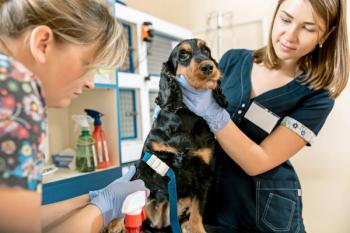
Blog: No more excuses. Its time to act
The time has come for women in veterinary leadership roles.
We can see it from miles away. It didn't just sneak up on us, yet that's the impression you get from some conversations around veterinary conferences. Women constitute 78 percent of graduating classes and, currently, 50-55 percent of the profession. This is expected to rise to over 70 percent by 2030.
Yet how closely does leadership of veterinary organizations reflect these demographics? Take a look: of the 30 U.S. veterinary schools, eight have women deans. These are strong numbers (27 percent) when compared with animal health's private sector and human medical schools. National corporate numbers are revealing. American women hold almost 52 percent of all professional-level jobs, yet when it comes to their representation in leadership positions:
> They are only 14.6 percent of executive officers, 8.1 percent of top earners, and 4.6 percent of Fortune 500 CEOs.
> They hold just 16.9 percent of Fortune 500 board seats.
> In the financial services industry, women make up 54.2 percent of the labor force but are only 12.4 percent of executive officers and 18.3 percent of board directors. None are CEOs.
> American women account for 78.4 percent of the labor force in healthcare and social assistance but only 14.6 percent of executive officers and 12.4 percent of board directors. None are CEOs.
> In medicine, women comprise 34.3 percent of all physicians and surgeons but only 15.9 percent of medical school deans.
This blogger does not have data for animal health companies, but it is difficult to imagine that the percentages are any better. In some corners of the industry great progress has been made. For example, 36 of 50 state veterinary medical associations have female executive directors. The American Animal Hospital Association (AAHA) board of directors currently consists of seven women and one man. The current president, vice president and president-elect are women.
State VMAs run ahead of the American Veterinary Medical Association (AVMA) in women leadership. The reason for the AVMA's deficit ironically stems from the power granted by the AVMA to the states in electing delegates, and the tiered structure of AVMA's governance. Recent reform efforts were defeated. So it's not the case that a large group within the profession is not trying to bring the profession's leadership structure into the twenty-first century-still, the problem remains unsolved.
This week's Western Veterinary Conference is conducting an impressive program in
Mark Cushing, JD, is founding partner of the
The
Newsletter
From exam room tips to practice management insights, get trusted veterinary news delivered straight to your inbox—subscribe to dvm360.




